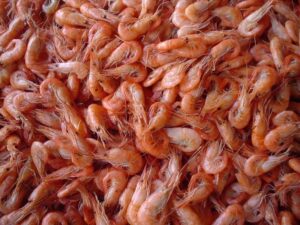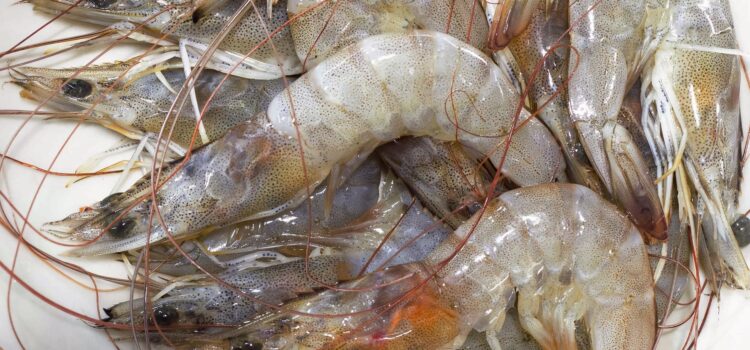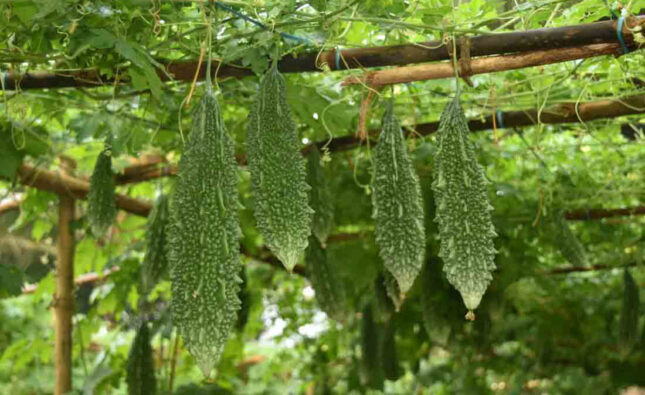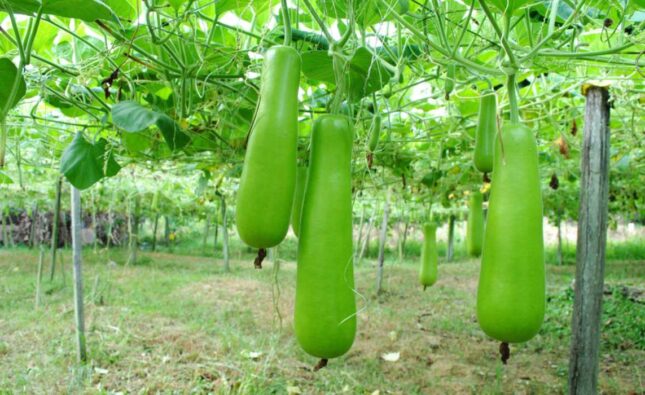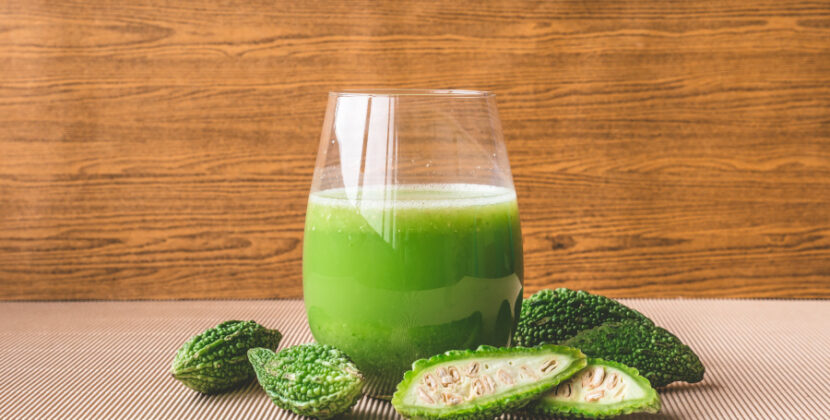Prawns Farming, Commercial Species, Harvesting, Its Market Demand & Sales: A Complete Startup Idea for Beginners
What are Prawns
Prawns are a type of shellfish that are closely related to shrimp. They are commonly found in both freshwater and marine environments. Prawns have elongated bodies with thin legs and typically range in size from a few centimeters to several inches long, although some larger species can grow up to a foot or more in length. Prawns are known for their delicious taste and are consumed in many cuisines around the world. They have a sweet and delicate flavor and are often used in various seafood dishes, such as curries, stir-fries, salads, and pastas.
In terms of appearance, prawns have a curved body with a well-developed tail fan, which they use for swimming. They also have prominent antennae and a segmented body. Unlike shrimp, prawns usually have branching gill structures and claws on three of their five pairs of legs. Prawns are a popular seafood choice due to their versatility, taste, and nutritional value. They are a good source of lean protein and contain essential nutrients such as omega-3 fatty acids, vitamins, and minerals. It’s worth noting that the term “prawn” is sometimes used interchangeably with “shrimp” in different regions, leading to some confusion. However, in biological terms, prawns and shrimp are distinct, with slight differences in their anatomical features.
Prawn fish farming
Prawn fish farming, also known as prawn aquaculture or prawn farming, refers to the cultivation of prawns or shrimp in controlled environments for commercial purposes. It involves the breeding, rearing, and harvesting of prawns in ponds or tanks. Prawn farming is a specialized form of aquaculture that focuses on the production of prawns for human consumption. Different species of prawns are farmed around the world, including the giant river prawn (Macrobrachium rosenbergii), the Pacific white shrimp (Litopenaeus vannamei), and the black tiger shrimp (Penaeus monodon).
Here are some key points about prawn farming:
1. Commercial Species of prawns and its size in mm
There are several commercially important species of prawns that are commonly farmed and harvested for human consumption. Here are some notable species:
a. Giant Tiger Prawn (Penaeus monodon):
Also known as Black Tiger Prawn, it is one of the most widely farmed prawn species globally. It has a robust flavor, large size, and is highly valued in the seafood market.
b. Whiteleg Shrimp (Litopenaeus vannamei):
This is one of the most extensively farmed shrimp species worldwide. It is known for its fast growth rate, high reproductive capacity, and adaptability to various farming conditions.
c. Pacific White Shrimp (Litopenaeus setiferus):
Another important shrimp species for commercial farming, it is primarily found in the Americas. It is known for its mild flavor and is popular in the seafood industry.
d. Indian White Prawn (Penaeus indicus):
This species is commonly farmed in India and other parts of Southeast Asia. It has good market demand due to its taste and texture.
e. Kuruma Prawn (Marsupenaeus japonicus):
This species is native to the Indo-Pacific region and is highly prized for its sweet and delicate flavor. It is often utilized in high-end seafood dishes.
f. Banana Prawn (Fenneropenaeus merguiensis):
Found in Australia and Southeast Asia, the Banana Prawn is valued for its large size and sweet flavor. It is commercially harvested and farmed.
g. Northern Prawn (Pandalus borealis):
Also known as Coldwater Prawn, it is a cold-water species found in the North Atlantic. It is popular in European and North American markets.
These are just a few examples of commercially significant prawn species. Other species like the Blue Shrimp (Penaeus stylirostris), Brown Shrimp (Crangon crangon), and various freshwater prawns are also commercially important in specific regions.
2. Ponds and tanks:
Prawn farming can be carried out in specially constructed ponds or tanks. These systems are designed to provide suitable conditions for the prawns to grow, including water quality, temperature, and proper aeration.
Here is an overview of ponds and tanks used in prawn farming:
A. Ponds:
a. Earthen Ponds:
Earthen ponds are excavated in the ground and lined with clay or a synthetic liner to retain water. They are the most common type of ponds used in prawn farming. Earthen ponds allow for a large water volume and ample space for prawn growth.
b. Concrete Ponds:
Concrete ponds are constructed using reinforced concrete walls and floors. They are durable, long-lasting, and can be designed to specific dimensions. Concrete ponds provide better control over water quality and are often used in commercial prawn farms.
c. Tidal Ponds:
Tidal ponds are located near coastal areas and rely on tidal movements to provide a flow of water. Prawns in tidal ponds experience natural fluctuations in salinity levels, which can affect growth and survival.
B. Tanks:
a. Raceway Tanks:
Raceway tanks are elongated and shallow tanks that allow for water flow in a continuous loop. Prawns are grown in a water stream created by pumps or gravity flow. Raceway tanks are ideal for high-density prawn farming and provide good water circulation and aeration.
b. Circular Tanks:
Circular tanks are commonly used for indoor prawn farming systems. They can be made of fiberglass, polyethylene, or other materials. Circular tanks offer efficient space utilization, easy cleaning, and good water circulation.
c. Recirculating Aquaculture Systems (RAS):
RAS involves the use of tanks or containers to create a closed-loop system where water is continuously filtered and recirculated. RAS technology allows for precise control of water quality parameters and biosecurity.
3. Water management:
Prawn farming requires careful management of water quality parameters such as dissolved oxygen, pH levels, and salinity (if farming marine shrimp). Regular monitoring and maintenance of water quality are essential for the health and growth of prawns.
Here are some key considerations for water management in prawn farming:
A. Pond Preparation:
Before stocking prawns, the pond should be properly prepared. This involves removing any debris or unwanted vegetation, ensuring proper leveling of the pond bottom, and addressing any drainage or water inflow issues. It’s important to have a well-designed pond layout that allows for efficient water circulation.
B. Water Source:
Choose a reliable and clean water source for prawn farming. It can be freshwater or brackish water, depending on the specific prawn species being cultured. Ensure the water source is free from contaminants and pollutants that could negatively impact prawn health.
C. Water Quality Monitoring:
Regularly monitor water quality parameters such as temperature, pH, dissolved oxygen (DO), ammonia, nitrite, and nitrate levels. These parameters directly affect prawn growth and health. Implement a schedule for water testing and record the results to identify any potential issues and take corrective measures as needed.
D. Aeration and Oxygenation:
Adequate oxygen levels are crucial for prawn health. Implement aeration systems such as paddlewheels, aerators, or diffusers to enhance dissolved oxygen levels in the pond. Proper aeration helps maintain a well-oxygenated environment, particularly during periods of high stocking density or warm weather when oxygen levels may decrease.
E. Water Exchange and Circulation:
Regular water exchange or circulation is essential to maintain water quality. It helps remove metabolic wastes, excess nutrients, and maintain optimal water parameters. The frequency and volume of water exchange depend on factors such as stocking density, feeding rates, and pond size.
F. Waste Management:
Proper waste management is crucial to prevent the accumulation of organic matter, which can lead to water quality deterioration. Remove uneaten feed, excess organic material, and dead prawns regularly from the pond. Implement sedimentation tanks or settlement ponds to remove suspended solids and organic matter from the water.
G. Biosecurity Measures:
Implement biosecurity protocols to minimize the risk of introducing pathogens or diseases into the prawn farming system. Control the movement of people, equipment, and vehicles in and out of the farm. Use disinfection procedures for equipment and maintain proper hygiene practices.
H. Record Keeping:
Maintain records of water quality parameters, water exchange, feed usage, and any observed abnormalities or diseases. Proper record keeping allows for better monitoring, analysis, and management decisions.
4. Feeding:
Feeding is an essential aspect of prawn farming to support growth, development, and overall health. Prawns are fed a balanced diet that typically includes commercial feed pellets, supplemented with natural food sources present in the pond or tank. Proper feeding practices ensure that prawns receive the necessary nutrients for optimal performance.
Here are some important details about feeding prawns:
a. Feed Types:
Prawns can be fed a variety of feeds, including artificial feeds, natural feeds, or a combination of both. Artificial feeds, such as pelleted or extruded feeds, are commercially available and formulated to provide balanced nutrition. Natural feeds include organisms found in the pond, such as plankton, algae, insects, and detritus, which can supplement the prawn’s diet.
b. Feed Composition:
Prawn feeds generally consist of a combination of protein sources (e.g., fishmeal, soybean meal, or other plant-based protein), carbohydrates (e.g., rice bran, wheat flour), lipids (e.g., fish oil, vegetable oil), vitamins, minerals, and other essential nutrients. The composition of the feed depends on the prawn species, life stage, and nutritional requirements.
c. Feed Size and Form:
Feeds should be of an appropriate size and form for the prawn’s mouth and digestive system. Commercially available prawn feeds come in various pellet sizes to accommodate different prawn sizes. The feed should be easily consumable, ensuring that prawns can efficiently feed on it without excessive waste.
d. Feeding Frequency and Amount:
Feeding frequency and amount vary depending on the prawn species, size, pond conditions, and growth stage. Generally, prawns are fed multiple times a day, ranging from 2 to 6 feedings. Start with smaller amounts and adjust based on prawn consumption and pond conditions to avoid overfeeding, which can lead to poor water quality.
e. Feeding Techniques:
Prawns can be hand-fed or fed using automatic feeders. Hand-feeding involves broadcasting the feed evenly over the pond surface, ensuring that all prawns have access to the feed. Automatic feeders can be set to dispense feeds at predetermined intervals, promoting consistent feeding practices.
f. Feeding Management:
Regular monitoring of prawn feeding behavior and feed conversion ratios (FCR) helps assess feed utilization and adjust feeding practices accordingly. Adjustments may include optimizing feed types, sizes, or feeding frequency based on prawn growth, appetite, and water quality parameters.
g. Supplemental Feeding:
In addition to commercial feeds, supplemental feeding with natural feeds can be practiced, especially in extensive or semi-intensive systems. This involves promoting natural food production in the pond through the application of fertilizers or by maintaining suitable conditions for natural food organisms to thrive.
h. Water Quality and Feed Interaction:
Proper water quality management is essential for successful feeding. Ensure good water quality parameters, such as dissolved oxygen, temperature, and pH, as they influence prawn feeding behavior and feed utilization. Avoid feeding during adverse conditions, such as low dissolved oxygen levels.
i. Monitoring and Adjustments:
Regular monitoring of prawn growth, feed consumption, and health is crucial to evaluate feeding effectiveness. Adjustments in feeding practices may be necessary based on growth rates, nutrient requirements, or changes in pond conditions.
Table: Feed formula for Freshwater prawn
| Ingredients | Feed 1 (%) | Feed 2 (%) |
| Fishmeal | 20 | – |
| Shrimp Head meal | – | 30 |
| Soya meal | 9 | 5 |
| Rice bran | 45 | 35 |
| Coconut oil cake | 20 | 20 |
| Tapioca starch | 5 | 9 |
| Mineral premix | 1 | 1 |
| Total | 100 | 100 |
References: TNAU, Agritech Portal, Food and Agriculture Organisation, 2002
5. Disease management:
Like any aquaculture operation, prawn farms need to implement disease prevention and management practices. Regular monitoring, proper biosecurity measures, and prompt response to any signs of disease or infection are crucial to maintain the health of the prawns.
Here are some key practices for disease management in prawn farming:
a. Pond Preparation and Maintenance:
Ensure proper pond preparation and maintenance to create a healthy environment for prawns. This includes regular removal of organic matter, such as dead plants and animals, to prevent the buildup of pathogens. Maintaining optimal water quality parameters, such as temperature, pH, and dissolved oxygen levels, is also important.
b. Water Source Management:
Use clean and reliable water sources for prawn culture. Avoid using water sources that may contain pollutants or pathogens that can negatively affect prawn health.
c. Biosecurity Measures:
Implement strict biosecurity protocols to prevent the introduction and spread of diseases. This includes controlling the movement of people, equipment, and vehicles in and out of the farm. Disinfection procedures, foot baths, and appropriate clothing or protective gear should be used to minimize the risk of disease transmission.
d. Stocking from Disease-Free Sources:
Obtain prawns or post-larvae (PL) from certified disease-free hatcheries or trusted sources. It is essential to ensure that the stock is free from known diseases and that the hatcheries follow proper biosecurity measures.
f. Regular Monitoring:
Conduct regular monitoring of prawn populations to detect any signs of disease early. This may include observing behavior, growth rates, feeding patterns, and conducting routine health checks. Engage a veterinarian or aquaculture specialist to assist with disease diagnosis and monitoring.
g. Quarantine and Testing:
Quarantine new prawns or PL for a period of time before introducing them to existing populations. This allows for observation and testing for any potential diseases before spreading to the main production ponds.
h. Nutrition and Feed Management:
Provide a balanced and high-quality feed to prawns to ensure proper nutrition and support a healthy immune system. Proper feed management practices, including appropriate feeding rates and schedules, help prevent stress and maintain good health.
i. Water Quality Monitoring and Management:
Regularly monitor water quality parameters such as temperature, dissolved oxygen, pH, and ammonia levels. Maintain optimal water quality conditions as per species requirements to reduce stress and minimize the risk of disease outbreaks.
j. Disease Diagnosis and Treatment:
Consult with aquatic animal health professionals or veterinarians experienced in prawn diseases if signs of disease are observed. Accurate diagnosis is crucial to implement appropriate treatment measures, such as the use of approved medications or treatments specific to the identified pathogen.
k. Record Keeping:
Maintain detailed records of stocking dates, water quality parameters, feeding practices, disease observations, treatments, and mortalities. These records help track trends, identify potential risk factors, and inform future management decisions.
| Disease | Prevention and Treatment |
| Macrobrachium hepatopancreatic parvo-like virus (MHPV) | Obtain and maintain disease-free stock; good management. No treatment reported. |
| Macrobrachium muscle virus (MMV) | Obtain and maintain disease-free stock; good management. No treatment reported. |
| White spot syndrome baculovirus (WSBV) | Obtain and maintain disease-free stock; good management. No treatment reported. |
| Nodavirus (MRNV) | Obtain and maintain disease-free stock; good management. No treatment reported. |
| Black spot (sometimes called brown spot or shell disease) | Good management, especially maintaining good water quality and avoiding physical damage by handling (by transfer, sampling) or by other prawns (may be caused by overstocking, poor feeding, etc.). Treatment by immersion in 10 ppm oxolinic acid for 1 hour, or 2 ppm nifurpirinol for 96 hours reported. |
| Appendage necrosis | Good management, especially maintaining good water quality and avoiding physical damage by handling (by transfer, sampling) or by other prawns (may be caused by overstocking, poor feeding, etc.). Treatment by 0.65-1.0 ppm erythromycin or 2 ppm of a penicillin-streptomycin mixture, or 1.5 ppm chloramphenicol reported. |
| Internal infections | Good management, especially good filtration and/or treatment of incoming hatchery water. Treatment by 2 ppm chloramphenicol combined with 2 ppm furazolidone for 5-7 days reported. |
| Bacterial infection caused by Enterococcus
|
Good management, especially by avoiding constructing farms in areas where (or operating farms at times when) temperature and pH are too high. No treatment reported. |
| Rickettsial disease | Obtain and maintain disease-free stock; good management; treatment of tanks and equipment with lime (CaO) before stocking. Treatment by application of 10 ppm oxytetracycline combined with 10 ppm furazolidone reported. |
| Lagenidium infection | Good management. Treatment by maintaining 10-100 ppb trifluralin in hatchery tanks, or treatment with 20 ppm of Merthiolate ® has been reported. |
| Infections by Fusarium and Saprolegnia | Good management, especially maintaining good water quality and avoiding physical damage by handling (by transfer, sampling) or by other prawns (may be caused by overstocking, poor feeding, etc.). No treatment reported. |
| Yeast infections | Good management, especially the avoidance of lower than optimal water temperatures, the accumulation of organic matter and eutrophication; use better water exchange, aeration and circulation and lower feeding rates. No treatment reported. |
References: TNAU, Agritech Portal, Food and Agriculture Organisation, 2002
6. Harvesting:
In pond-based prawn farming, the most common method of harvesting is by draining the pond partially or completely. The water level is reduced, and prawns are collected as the water recedes. Prawns tend to concentrate in the remaining water, making it easier to catch them using nets or traps. Harvesting is usually done during the cooler parts of the day to minimize stress on the prawns.

7. Post harvesting handling of prawns
Proper post-harvest handling is crucial to maintain the quality and freshness of prawns after they are harvested. Here are some important considerations for handling prawns after harvesting:
a. Cooling and Chilling:
Immediately after harvesting, prawns should be cooled to slow down enzymatic activity and reduce bacterial growth. This helps preserve their quality and extends their shelf life. Prawns can be placed in ice or chilled using refrigeration units to maintain their freshness.
b. Removal of Dead or Damaged Prawns:
Inspect the harvested prawns and remove any dead or damaged individuals. Dead prawns should be discarded to prevent spoilage and avoid contamination of healthy prawns.
c. Cleaning and Washing:
Rinse the prawns gently with clean water to remove any dirt, debris, or slime. Avoid using chlorinated water or water treated with chemicals as it can affect the prawn quality.
d. Grading and Sorting:
Sort the prawns based on size, color, and quality if required for specific market preferences. This helps ensure consistency in product appearance and allows for better pricing and market segmentation.
e. Packaging:
Proper packaging is essential to protect prawns from contamination and maintain their quality. Prawns are often packed in perforated plastic bags or trays to allow for proper airflow and drainage. Some prawns may be individually quick frozen (IQF) for longer-term storage.
f. Storage and Transportation:
Store the packaged prawns in cool storage conditions, typically between 0 to 4 degrees Celsius (32 to 39 degrees Fahrenheit), to maintain their freshness. Proper temperature control during transportation is crucial to prevent spoilage annsure the prawns reach the market in optimal condition.
g. Traceability and Record Keeping:
Maintain records of the harvested prawns, including date of harvest, batch information, and any relevant details for traceability purposes. This helps track the prawn’s journey from harvest to market and aids in quality control and recall procedures if needed.

8. Market Demand and Sales of Prawns
Market demand and sales of prawns can vary depending on several factors, including regional preferences, consumer trends, availability, and the specific prawn species being sold. Here are some key points regarding market demand and sales of prawns:
a. Global Demand:
Prawns are widely consumed globally and have significant market demand. They are valued for their taste, versatility in cooking, and nutritional benefits. The demand for prawns is influenced by factors such as population growth, rising consumer incomes, and increased awareness of the health benefits of seafood.
b. Regional Variations:
Market demand for prawns can vary across different regions and countries. Preferences for prawn species, sizes, and forms (fresh, frozen, cooked, etc.) may differ based on cultural and culinary traditions. For example, in Southeast Asia, there is high demand for species like Giant Tiger Prawn and Whiteleg Shrimp, while in North America, Pacific White Shrimp is popular.
c. Consumer Trends:
Consumer preferences and trends play a role in shaping the market for prawns. Increasingly, consumers are seeking sustainably sourced seafood, including prawns. Certifications such as the Aquaculture Stewardship Council (ASC) and Best Aquaculture Practices (BAP) can influence consumer choices and open up market opportunities for responsibly produced prawns.
d. Value-Added Products:
The market for value-added prawn products, such as peeled and deveined prawns, prawn-based snacks, and ready-to-cook prawn products, is expanding. These products offer convenience and cater to the demand for quick and easy meal solutions.
e. Export and Import:
Prawn production and trade are often globalized. Countries with significant prawn farming industries, such as Thailand, China, India, and Vietnam, export prawns to meet international demand. Importing countries, including the United States, Japan, and European nations, rely on imports to meet domestic consumption needs.
f. Retail and Foodservice:
Prawns are sold through various channels, including supermarkets, seafood markets, restaurants, and online platforms. Retailers and foodservice providers play a vital role in distributing prawns to consumers. Packaging, labeling, and product presentation can impact consumer choices and sales.
g. Quality and Traceability:
Consumers are increasingly interested in knowing the origin and quality of the prawns they purchase. Providing information about the source, farming or catching methods, and sustainability practices can enhance consumer trust and facilitate sales.
h. Price Dynamics:
The pricing of prawns can be influenced by factors such as supply and demand, seasonal variations, farming or harvesting costs, and market competition. Prawns can vary in price based on factors like size, quality, and the level of processing or value-added treatments.
